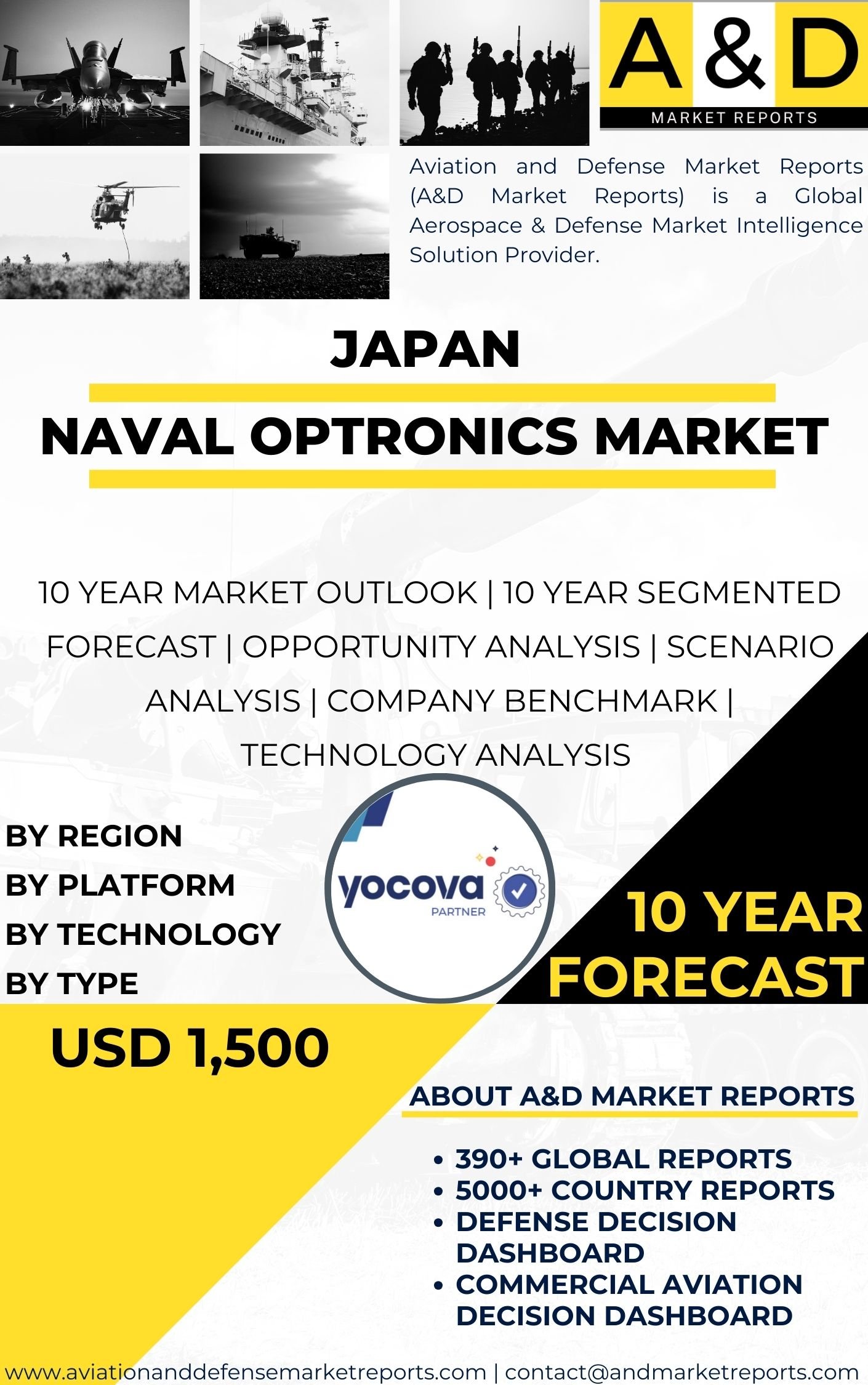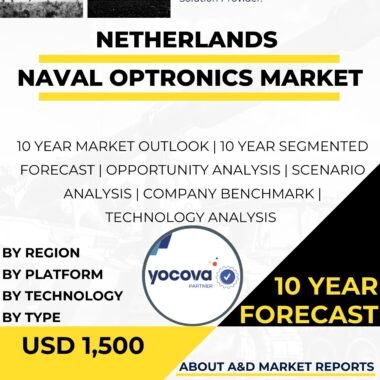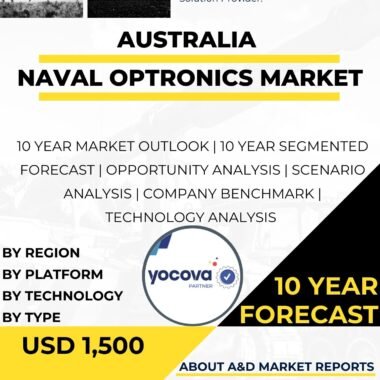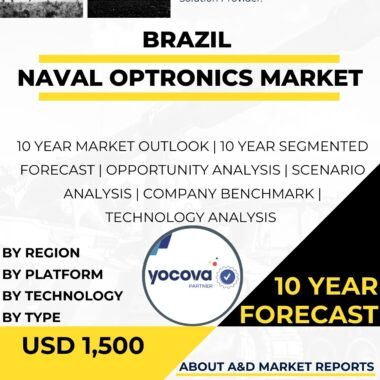Description
The Naval Optronics Market in Japan is shaped by the country’s strategic focus on strengthening its maritime defense capabilities amid an increasingly complex geopolitical environment in the Asia-Pacific region. Japan’s naval forces prioritize advanced optronic systems to enhance situational awareness, threat detection, and precision targeting across various vessel types. This market reflects a growing demand for sophisticated electro-optic (EO) and infrared (IR) technologies designed to meet the operational needs of surface combatants, submarines, and unmanned maritime systems.
Japanese naval modernization programs are instrumental in driving the demand for naval optronics. Electro-optic surveillance systems dominate the procurement landscape, valued for their capacity to deliver high-definition imagery and long-range identification capabilities. These systems integrate multi-sensor arrays including autonomous tracking and gyro-stabilization technologies that maintain image stability in turbulent sea conditions. Such capabilities are crucial for Japan?s fleet commanders who require reliable identification and surveillance beyond 18 kilometers. Software-defined video pipelines in these systems allow periodic upgrades through software updates, which extend operational relevance and avoid costly hardware replacements. This adaptability is vital for maintaining technological edge over the long term.
A notable trend within Japanese naval optronics is the transition from traditional line-of-sight submarine optics to digital optronic masts. These masts transmit real-time visual feeds from the submarine’s exterior to internal control consoles, enhancing stealth by eliminating the need for external periscopes that compromise hull integrity. The adoption of standardized optronic mast designs ensures reduced downtime during retrofitting, facilitating faster adoption across the submarine fleet. This upgrade path demonstrates Japan’s commitment to incorporating cutting-edge technology while minimizing operational disruptions.
Infrared imaging sensors represent a major technology segment in Japan?s naval optronics market due to their unmatched all-weather, day-and-night operational performance. Mid-wave and long-wave infrared channels provide superior target detection in poor visibility conditions such as fog, rain, and darkness, which are common in maritime environments. Despite the higher cost of cooled detector systems, Japan prioritizes these technologies for critical mission sensors since thermal clarity at dawn, dusk, and adverse meteorological conditions significantly enhances threat detection and tracking. Larger sensor arrays and advanced cryogenic cooling systems are routinely integrated to ensure high reliability and longer operational life.
Laser systems are emerging as a dynamic growth segment. Japan emphasizes dual-use laser technologies for ranging, precision targeting, and increasingly for counter-drone applications. The integration of laser rangefinders and designators with weapon guidance systems boosts precision strike capabilities, vital for littoral defense and power projection roles. Japan?s focus on incorporating advanced laser beam-combining optics alongside traditional EO and IR channels underlines a holistic approach to sensor fusion and multi-domain warfare readiness.
Platform-wise, surface vessels take the lead in consumption of naval optronic technology. Every newly constructed or refitted surface combatant, including destroyers and frigates, is equipped with multiple stabilized EO/IR sensor directors. These sensors provide comprehensive 360-degree coverage for surveillance, targeting, and navigation redundancy, reinforcing Japan’s maritime superiority. Naval programs for these surface fleet enhancements prioritize sensor suites that can integrate seamlessly into existing combat management systems for real-time threat analysis and response coordination.
Submarines also contribute consistently to the market. Japan?s investment in next-generation conventional submarine fleets equipped with sophisticated digital masts and underwater IR sensors supports both offensive and defensive maritime operations. These platforms benefit from stealth and enhanced situational awareness, essential for the strategic deterrence role played by Japan?s submarine force.
An accelerating trend is the deployment of unmanned maritime platforms equipped with compact EO/IR payloads. Japan is actively developing unmanned surface and underwater vessels that necessitate lightweight, power-efficient sensor packages to extend operational endurance while minimizing detectability. These autonomous systems are intended for various roles including mine countermeasures, reconnaissance, and anti-submarine warfare. The growing strategic emphasis on dispersed lethality and risk reduction through unmanned assets fuels rapid innovation and adoption within this segment.
The end-user profile of Japan?s naval optronics market is heavily concentrated in its naval forces, reflecting a dominant share of procurement. These forces require comprehensive inventories of optronic sensors across ship classes and aerial maritime patrol units to maintain situational superiority in contested maritime spaces. Meanwhile, coast guard and maritime law enforcement also contribute to market growth, modernizing with more cost-effective, simplified optronic systems to address illegal fishing, smuggling, and search-and-rescue missions in crowded sea lanes.
The competitive landscape in Japan?s naval optronics market features a moderate level of concentration. Dominant global and regional suppliers offer full sensor suites coupled with integration and through-life support services. Innovation is focused on enhancing autonomous threat classification engines and software-defined sensor architectures that future-proof installed systems through algorithm upgrades. Suppliers compete not only on sensor performance but also on system reliability, particularly of cooling components, supply chain resilience, and the ability to integrate multi-domain data for the growing complexity of maritime security operations.
In summary, Japan?s naval optronics market is characterized by its focus on technologically advanced, multi-spectral sensor solutions that provide critical surface and subsurface situational awareness in complex operational theaters. The market reflects a blend of legacy system upgrades and emerging capabilities driven by autonomous maritime platforms, laser systems, and enhanced infrared imaging. This technologically sophisticated approach supports Japan?s strategic imperatives of maritime domain awareness, fleet modernization, and multi-platform sensor interoperability in a region marked by heightened naval activity and evolving security challenges. The market is thus positioned for sustained growth, underpinned by innovation in sensor fusion, software upgradeability, and integration with next-generation naval combat systems.




